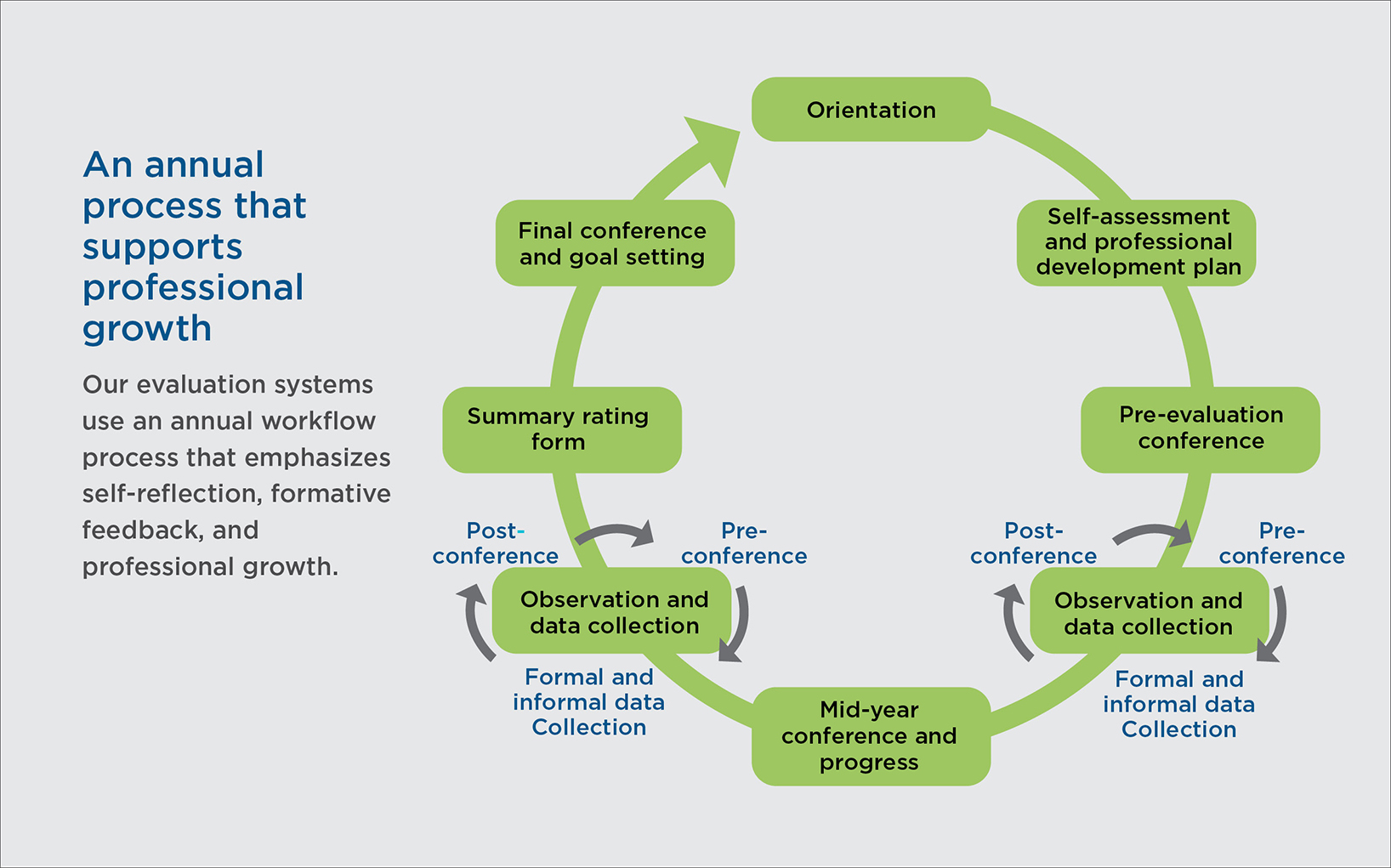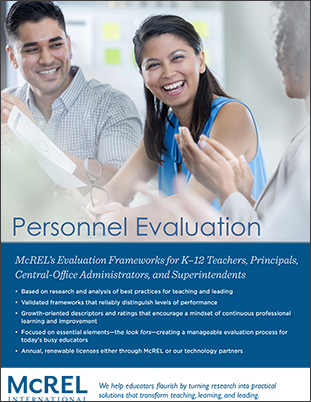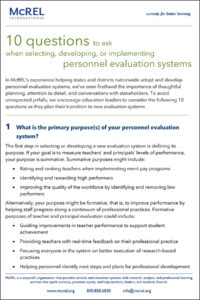Personnel Evaluation
Student success starts with investing in the growth and performance of school leaders and teachers. Our comprehensive personnel evaluation systems use sound research on educator effectiveness and present clear, easy-to-use rubrics and descriptions to evaluate teachers, principals, and superintendents on what matters most to student achievement while helping them reach their full professional potential.
Inside-Out Evaluation Approach
Our research-based evaluation process uses an annual workflow process that is designed to meet your school’s goals through a combination of evidence-based strategies, relationship building, data-informed decision making, and professional growth. The inside-out approach, focusing on bright spots to embrace and expand existing strengths, follows these five steps as depicted in the diagram below:
STEP 1: SELF-ASSESSMENT—combination of evidence-backed rubrics and your own goal-setting metrics. This work becomes the basis for collaborative dialogue to craft goals for the upcoming academic year.
STEP 2: PRE-EVALUATION CONFERENCE—agree on the conditions of the evaluation necessary to demonstrate proficiency, potential consequences of poor performance, and potential benefits of accomplished or distinguished performance.
STEP 3: CONSOLIATED PERFORMANCE ASSESSMENT—McREL will help collect, analyze, and synthesize the information gathered in step 2 to prepare a comprehensive picture of performance throughout the year.
STEP 4: EVALUATOR SUMMARY RATINGS—McREL will help you rate your team’s performance using rubrics on each element and framework component following the rubric’s scoring method.
STEP 5: FINAL EVALUATION AND GOAL-SETTING MEETING—McREL collaborates with your team and your school board to discuss progress toward achieving your goals and the level of performance on standards as documented in steps 1 and 4.
Need help selecting an Evaluation System that is tailored to your School/District?
Contact us to learn more about we can support you.
Annual Process That Supports Professional Growth
Our evaluation systems use an annual workflow process that emphasizes self-reflection, formative feedback, and professional growth.



